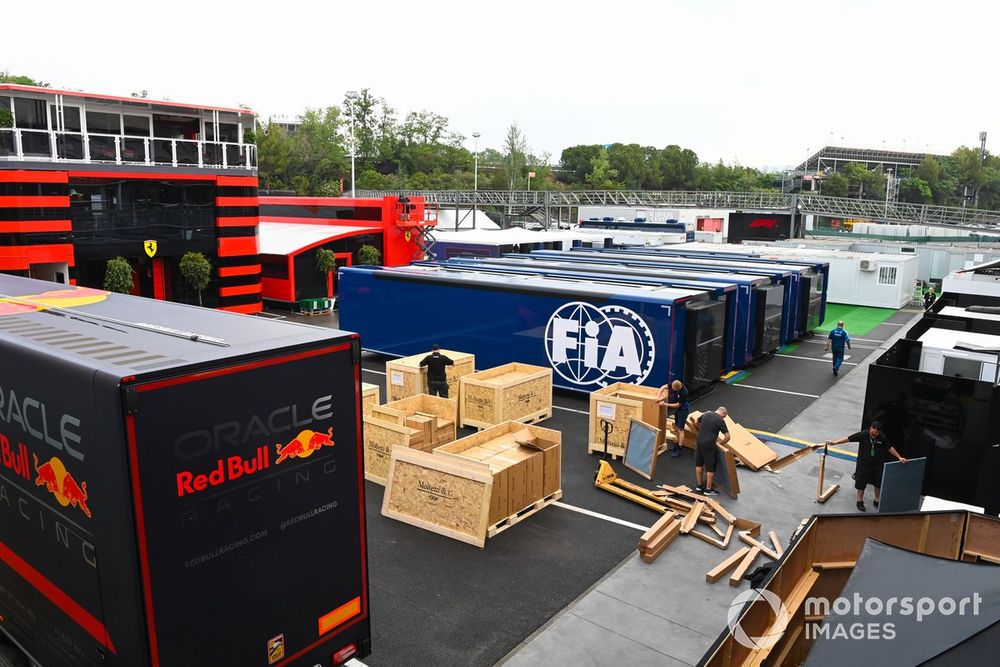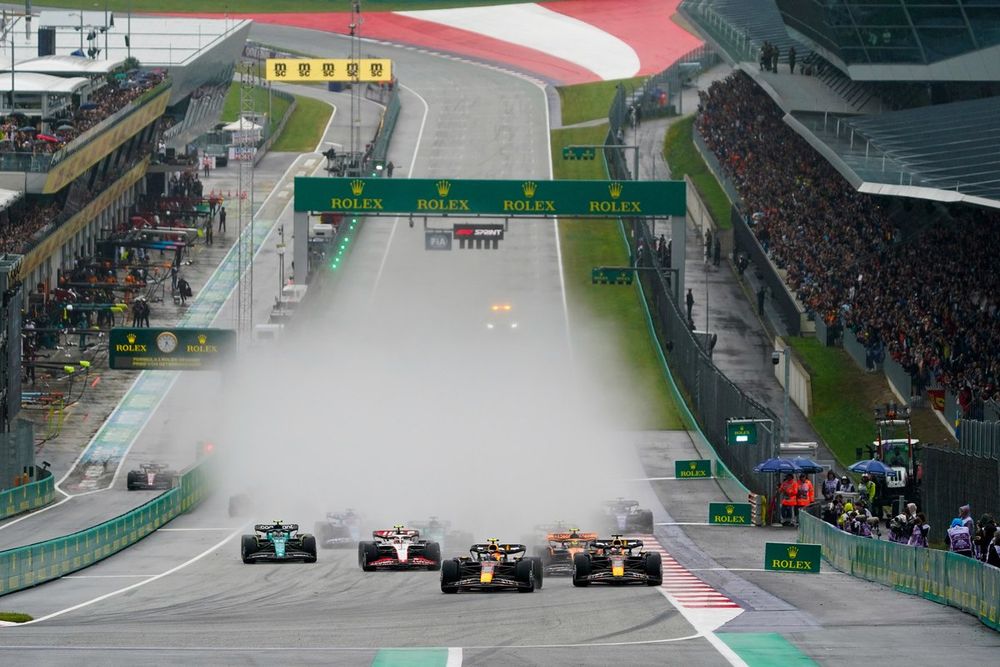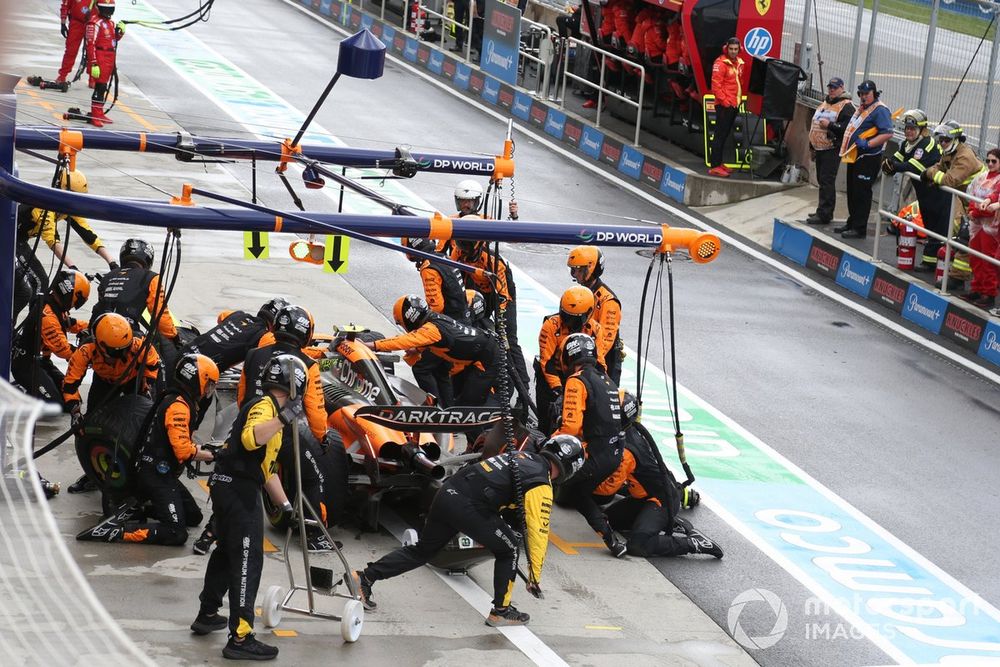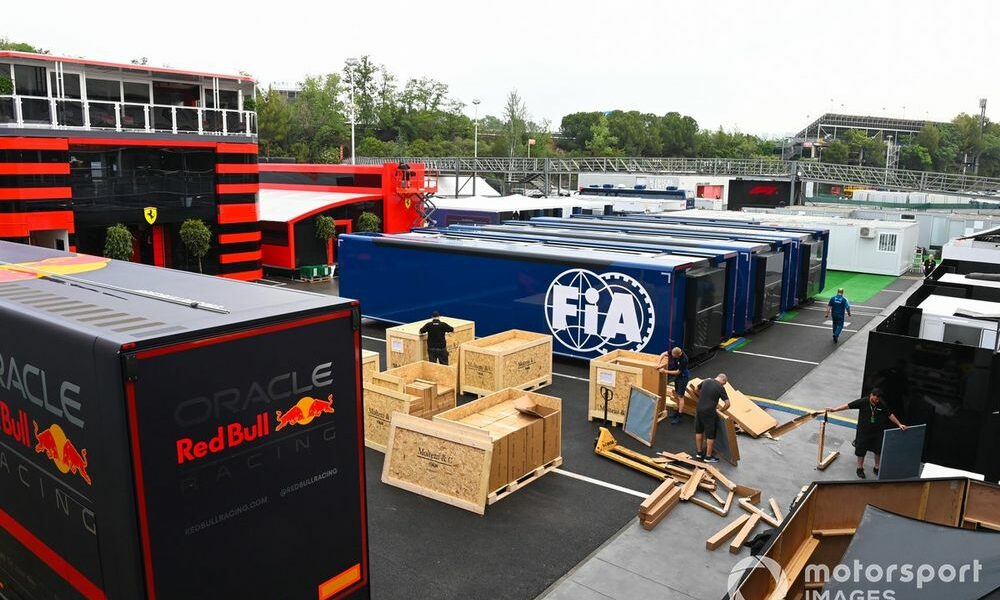“I think multiple triple-headers are not sustainable,” said former Racing Point team boss Otmar Szafnauer in September 2020.
“I don’t think it’s a good idea,” said former Haas team principal Guenther Steiner around the same time.
And in 2021, McLaren’s former team boss Andreas Seidl – now Sauber CEO – added his voice to the concerns about triple headers saying: “[An] important topic is also the number of triple-headers.
“From my point of view, we should avoid them completely, again to reduce the burden on our people. The calendar should try to get through with avoiding any triple-headers.”
As Formula 1 teams gear up for back-to-back races in Barcelona, the Red Bull Ring in Austria and Silverstone, it is worth reminding ourselves of the initial reaction to the triple-headers.
It is perhaps worth noting too that the comments are from team principals who fly at the front of the plane, rather than those in economy or making the long drives in between the destinations, or from those responsible for the physical tasks of building and dismantling the giant motorhomes or the cars, or those in the kitchens or hospitality units who are in essence working triple-shifts each day.
The growth of the calendar to 24 races, a record number this season and at the maximum the rules permit, has resulted in two triple-headers this season and the aforementioned European leg could result in a 3,000-mile journey by road across the three destinations.

Crates are unpacked between Red Bull and FIA transporters
Photo by: Mark Sutton / Motorsport Images
But the second triple-header at the tail end of the season is an entirely different proposition when you factor in time differences and jet lag and travel fatigue.
The final three races in 2024 start in Las Vegas before races in Qatar and then Abu Dhabi. It is a 10-hour time swing before you even start the 17-hour journey from the US to the Middle East.
Despite the concerns from the team bosses, triple-headers are now part of the fabric of modern F1 and, as a result, are largely accepted.
But are there any dangers associated with such a heavy work schedule and what can be done to prevent those risks?
Autosport spoke with Head of Sport Science at the Sport Science Agency, Dr Tom Brownlee in conjunction with Dr Dan Martin, owner of Combine Performance who works with F1 teams and drivers.
Martin said: “The biggest issue is physical fatigue. As time goes on by week three there are always very tired bodies and that carries increased risk of injury, particularly lower backs, knees, and wrists are common.
“The other element is psycho-social; naturally missing family or being unable to meaningfully help with any family issues at home.

Austria forms part of the triple-header.
Photo by: Alessio Morgese
“Due to being away from home – and instead together with team members 24/7 – there can be increased irritability and occurrences of decreased team cohesion.
“We have to remember the staff simply don’t ‘go home’ after a day at work. A typical working day is between 12 and 14 hours and they commute together, work together, have dinner together and socialise together.”
Given that triple headers are relatively new, there are still many unknowns about such a travel schedule.
One team had mentioned a decrease in fertility levels but without scientific data, it is not possible to prove.
However, if parallels are drawn with other shift work patterns then there are some justifiable concerns that need to be addressed.
Martin added: “We don’t know if anyone is capturing and recording the data to accurately report on this in F1.
“It’s reported that consistent sleep and awake time is correlated with health and longevity or lifespan. Conversely, people who have irregular or erratic sleep/wake times (e.g shift workers etc) live shorter lives and have greater rates of disease and all-cause mortality.

Photo by: Dom Romney / Motorsport Images
“Whether this is true in F1, where they have some of the most irregular sleep patterns, we don’t know, but it could be possible over a prolonged period.”
So what can be done by teams to ensure that staff avoid unnecessary health or injury risks?
Each team has access to advice from performance coaches and experts such as Dan who can develop routines to help with the shift in time zones, such as between Vegas and Qatar.
He said: “We have jet lag strategies. Performance coaches provide jet lag plans for every race away from Europe and encourage the team to prioritise sleep if they have spare time.
“Although efforts have been made to regionalise races across the year, the staff still do a lot of ‘time swinging’, going backwards and forwards between races.
“Limiting the number of races staff attend and rotating staff can help reduce the burden across the season.”
The other element is down to the teams and how they manage their staff.
Martin added: “It is important for teams, wherever possible, to supply staff with as much ‘downtime’ as possible whilst away.
“In between, give a day or a day and half off off if it’s possible, and where possible have later start times each day. Just 45-60 minutes extra on days where it is possible makes a big difference.
“If this is granted then the team members need to use this time wisely and responsibly.
As they’re not the ‘athletes’, there’s a culture amongst some (but definitely not all) to ‘unwind’ with alcohol.
“Equally, if time is given off they will eat out rather than being catered for by the team.
“Using this time to recover, to catch up on sleep, do some exercise rather than eat poor quality foods and drink alcohol to excess, is important.
“That’s one reason why we as performance coaches are there, to provide the structure and increase access to these things.
“During the working day, it is hard to make big impactful changes. More can be done before and between races to have staff more ready.
“Another option would be to make it so they aren’t required to do all 24 races and all triple-headers.
“Some teams have already adopted a model where team members, particularly mechanics and garage technicians whose job is much more physical than engineers, won’t travel to more than a set amount of races (e.g. 18 per season).
“It is still busy, but provides much-needed bouts of recovery and physical and mental breaks across the season.
“Ensuring team members have their own hotel rooms, which is not always the case, we have found is huge in terms of sleep quantity and quality whilst away and increased moods.
“It’s their own space and gives them privacy to fully catch up and speak with family members back home over the phone or with video calls.
“A season is a marathon and there will be tough periods you need to get through.
“It’s important to manage yourself, listen to the body, and recover as you go. Get the basics right – eat well, stay hydrated, limit alcohol, and prioritise sleep.”
Ultimately the long-term impact of the 24-race calendar and triple-headers is not yet known, but teams have the potential to ease the burden on their staff to keep them fit, health and fresh when they need them the most.
For the time being it is their responsibility to ensure they look after their staff and appropriate as must rest whenever possible.
This article was written with the support of Sport Science Agency.

